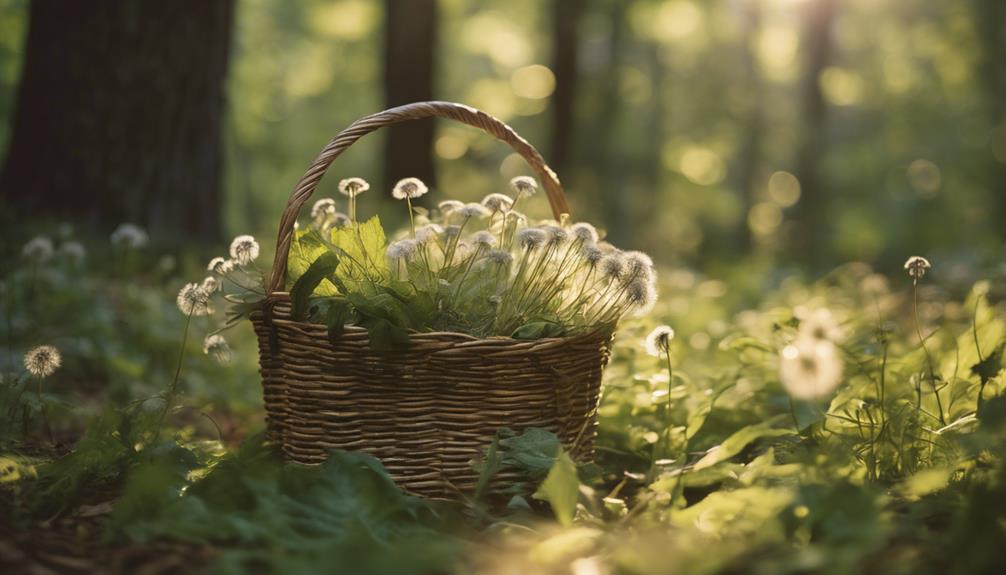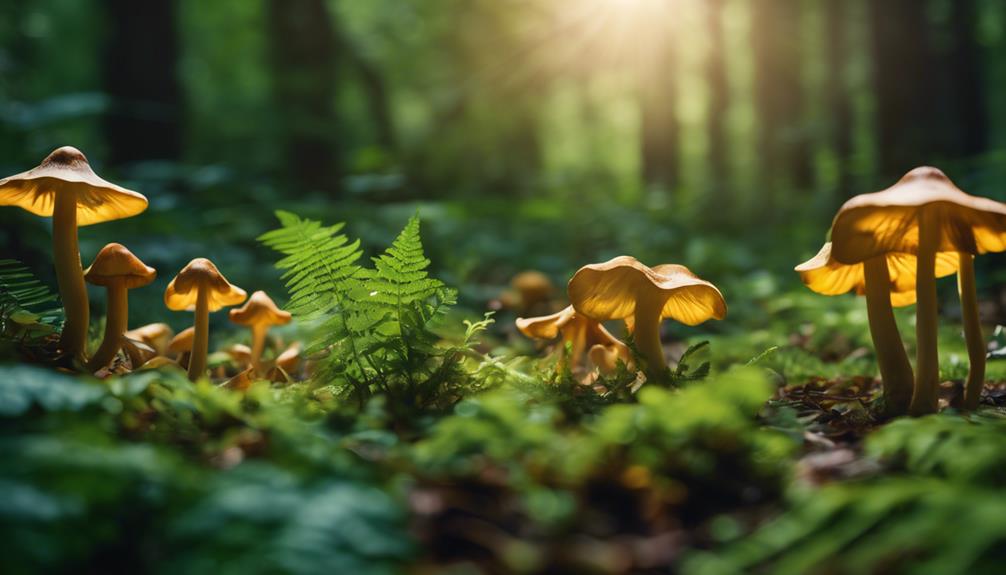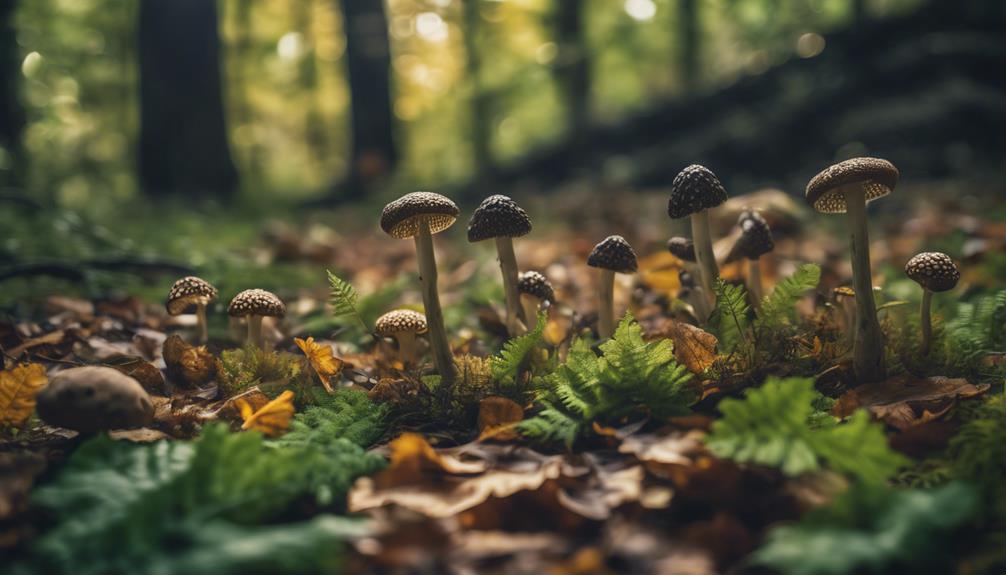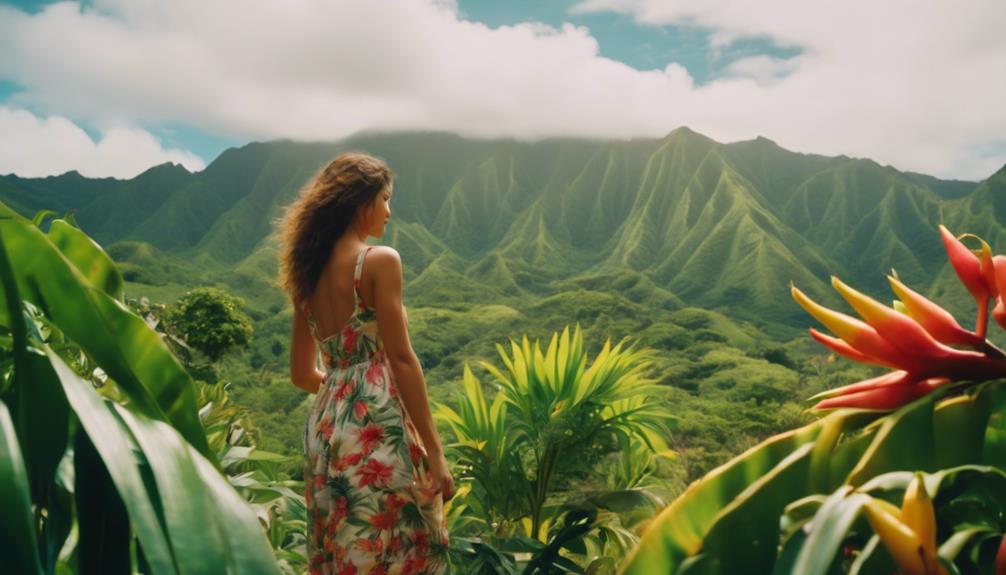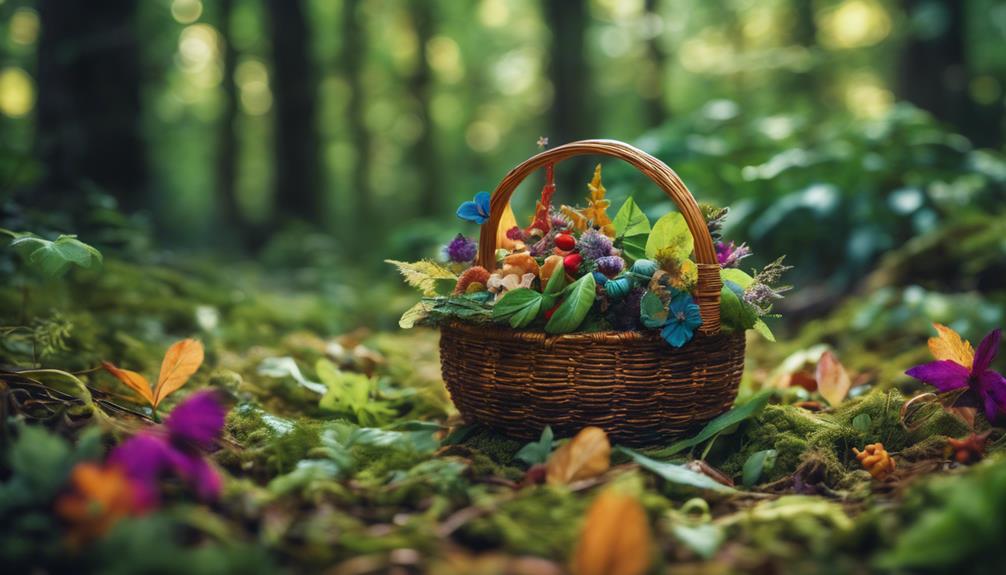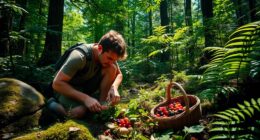You're enthusiastic to discover Connecticut's secret wild foods, from blueberries to chanterelle mushrooms. Start by understanding the state's diverse edible landscape, where indigenous species thrive in forests, fields, and wetlands. Properly identify edible mushrooms, like chanterelles, and learn about habitats, regulations, and sustainable practices. Familiarize yourself with native plant profiles, habitats, and regulations to forage responsibly. As you explore, you'll uncover the importance of sustainable harvesting practices, conservation efforts, and education programs. Dive deeper to reveal the secrets of Connecticut's wild edible landscape, and get ready to forage like a local.
Key Takeaways
- Familiarize yourself with Connecticut's regulations and permits required for foraging wild edibles.
- Learn to identify native edible plants, like blueberries and black walnuts, and their habitats.
- Understand sustainable harvesting practices to ensure continued growth of wild foods and preserve biodiversity.
- Develop skills to distinguish edible species from toxic look-alikes, and research safe harvesting techniques.
- Explore local ecosystems through workshops and field trips to discover hidden gems in Connecticut's wild edible landscape.
Connecticut's Wild Edible Landscape
As you venture into Connecticut's wild edible landscape, you'll discover a diverse array of indigenous species waiting to be discovered. The state's wild plants are a treasure trove of flavors, textures, and aromas, with many edible plants available for the taking. From the succulent wild berries to nutrient-rich greens, foraging in Connecticut offers a unique culinary adventure that harkens back to traditional practices. To ensure a safe and sustainable experience, it’s essential to familiarize yourself with seasonal edible plants and follow local guidelines, such as those found in Rhode Island foraging tips, which provide valuable insight into identifying safe plant species and practicing responsible harvesting. Always remain mindful of local ecosystems and forage in moderation to maintain the delicate balance of nature.
Blueberries and black walnuts are just a few of the native species that thrive in Connecticut's fertile soil. These wild plants have been a staple for centuries, providing sustenance for both humans and wildlife.
As you explore the state's forests, fields, and wetlands, you'll uncover a wealth of edible plants waiting to be foraged. From sweet wild berries to tangy greens, the options are endless.
However, sustainable harvesting practices play a vital role in conservation efforts in Connecticut. By adopting responsible foraging habits, you'll guarantee that these wild edible plants continue to thrive for generations to come.
Edible Mushroom Species Identification

When foraging for edible mushrooms in Connecticut, you'll need to develop a keen eye for detail to identify species like chanterelles, black trumpets, and boletes. These wild, edible mushrooms can be a delicious addition to your meals, but proper identification is essential to guarantee safe consumption.
Chanterelles, for instance, have a distinctive trumpet-shaped cap and a fruity aroma that sets them apart from lookalikes. Black trumpets, on the other hand, are known for their delicate flavor and can be found in Connecticut's forests during the summer months.
To become proficient in identifying these species, you'll need to learn about their habitat preferences, seasonal availability, and safe harvesting practices. By developing your skills in edible mushroom identification, you'll be able to confidently forage for these wild treats and enjoy the flavors of Connecticut's forests.
Foraging Techniques and Safety

As you venture into the world of foraging, it's essential to master the art of identifying edible species and researching safe harvesting practices.
You'll need to develop skills that guarantee you can distinguish between look-alikes and avoid toxic species.
Identify Edible Species
When it comes to identifying edible species, it's vital to be meticulous. You can start by studying field guides, attending foraging workshops, and consulting with experienced foragers to learn about the edible plants that grow in Connecticut.
Familiarize yourself with common edible plants like ramps, fiddleheads, wild berries, and mushrooms to expand your foraging repertoire. Additionally, utilize smartphone apps like iNaturalist or Seek by iNaturalist for real-time plant identification in the field to enhance your foraging experience.
Research Safe Harvesting
You'll need to research safe harvesting techniques to make sure you're gathering wild foods responsibly and avoiding potential risks. Understanding how to identify native plants and avoiding contaminated areas is important. Always positively identify plants before harvesting to avoid toxic or harmful species. Use field guides or apps to aid in plant identification and guarantee safe foraging practices.
Here are some key guidelines to keep in mind:
| Safety Tip | Why It Matters | Best Practice |
|---|---|---|
| Identify plants correctly | Avoid toxic or harmful species | Use field guides or apps |
| Avoid polluted areas | Prevent contamination | Steer clear of industrial sites and roads |
| Wear protective gear | Protect your hands | Wear gardening gloves |
Remember to understand and follow regulations and restrictions in your foraging area to ensure legal and sustainable practices. By following these guidelines, you'll be well on your way to safe and responsible wild food foraging.
Native Plant Profiles and Habitats

In Connecticut's diverse landscapes, you'll discover a variety of native plants, including blueberries, black walnuts, ramps, and fiddleheads, each thriving in specific habitats.
As you forage, you'll find that these plants have adapted to the state's unique environments. Blueberries, for instance, love acidic soils and can be found in wetlands and meadows. They're a popular wild edible in Connecticut, and their sweet-tart flavor is a treat.
Black walnuts, on the other hand, are sought after for their rich flavor and can be foraged in wooded areas. These trees prefer well-drained soils and full sun to partial shade.
Ramps and fiddleheads, being seasonal delicacies, grow in specific conditions like moist woodlands and riverbanks. By understanding the habitats of these native plants, you'll increase your chances of finding them.
Take note of the terrain, soil type, and sunlight exposure, and you'll be well on your way to foraging like a local.
Regulations and Sustainable Practices

Before you head out to forage, familiarize yourself with Connecticut's regulations, which are in place to protect native plants and ecosystems from over-harvesting. Understanding local regulations and guidelines is crucial to forage ethically and legally in Connecticut. You'll want to make sure you're not foraging in restricted areas, such as protected lands along the Connecticut River, to prevent over-exploitation of natural resources.
To enjoy sustainable foraging, keep in mind the following practices:
- Respect private property: Always obtain landowner permission before foraging on private land.
- Know what you're picking: Correctly identify the species to avoid mistakenly harvesting endangered or protected plants.
- Harvest responsibly: Only take what you need, and avoid over-harvesting to ensure the continued growth of wild foods.
- Preserve biodiversity: Avoid targeting rare or endangered species, and prioritize common, abundant species instead.
- Follow local guidelines: Familiarize yourself with local regulations, such as permits or restrictions, to ensure sustainable foraging practices.
Wild Food Preparation and Recipes

By incorporating fresh, locally foraged ingredients into your cooking routine, you can discover a world of flavors and textures that showcase the best of Connecticut's wild bounty.
Wild food preparation is all about celebrating the unique flavors and nutritional benefits of the state's wild foods. You can get creative with your recipes, using foraged ingredients in everything from salads and soups to main dishes and desserts.
By experimenting with wild food recipes, you'll not only develop a deeper appreciation for the seasonal bounty of nature, but you'll also be supporting local ecosystems and sustainable food practices.
As you explore the world of wild food preparation, you'll find that it's not just about cooking – it's about connecting with the land and the community. By choosing to support local, you're contributing to a more sustainable food system that benefits both the environment and the local economy.
Conservation and Protection Efforts

As you venture into the world of wild foods in Connecticut, protecting the state's natural habitats and ecosystems becomes a paramount concern. You're not just foraging for food, you're also becoming a steward of the land.
Conservation efforts in Connecticut focus on protecting native habitats from invasive species like Japanese honeysuckle, which can outcompete native plants like the iconic white oak. To combat this, conservation organizations use manual removal and planting of native species to restore ecosystems.
Here are some key conservation efforts in Connecticut:
- Manual removal of invasive species to restore ecosystems
- Planting native species to promote biodiversity
- Raising awareness about the impact of invasive species on Connecticut's biodiversity
- Promoting sustainable harvesting practices for native edible plants
- Education and outreach programs to promote conservation of native plants and habitats in Connecticut
Frequently Asked Questions
How Do You Find Food Sources in the Wild?
You find food sources in the wild by exploring diverse habitats, consulting field guides and local experts, and paying attention to seasonal changes to locate best edible plants, nuts, and mushrooms in Connecticut's forests, meadows, and parks.
How Do You Know Where to Forage?
You identify ideal foraging spots by considering factors like proximity to roads, pesticide use, and soil contamination, then searching for areas with diverse habitats, like Giuffrida Park, where you can find edible invasive species like Japanese honeysuckle.
Can You Forage in CT State Parks?
Like a forbidden fruit, CT state parks are off-limits for foraging, and you shouldn't even think about it, as regulations prohibit plant and mushroom collecting to preserve ecosystems, and violators will face fines or penalties.
How Do You Forage Food in the Woods?
You start foraging in the woods by researching edible plants, identifying habitats, and finding established trails, then you'll be ready to spot common edibles like ramps and berries, and harvest them sustainably.
Conclusion
As you've explored the wild edibles of Connecticut, remember that foraging isn't only a way to connect with nature, but also a way to reduce our environmental impact.
Did you know that if every American replaced just one meal per week with a foraged meal, we could reduce our national carbon footprint by 2.5%?
By foraging like a local, you're not only nourishing your body, but also doing your part for the planet.
Happy foraging!

